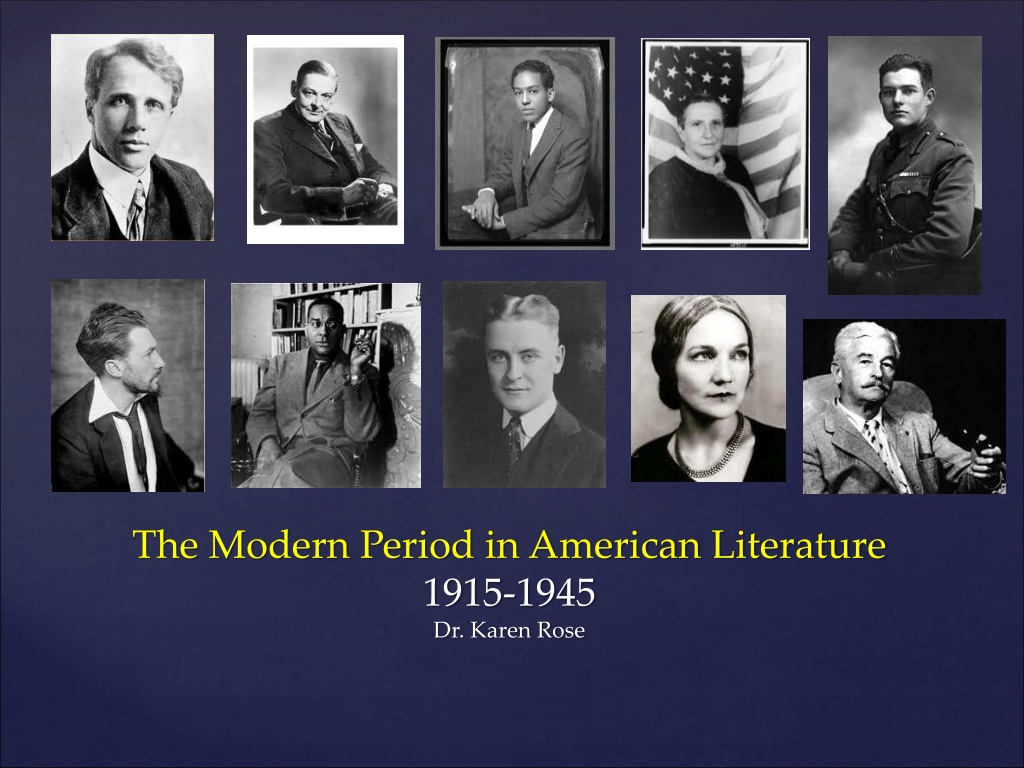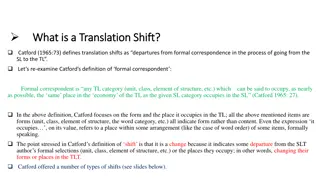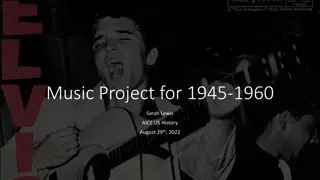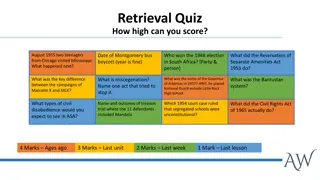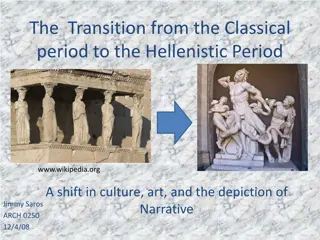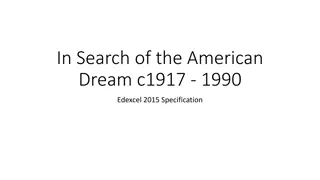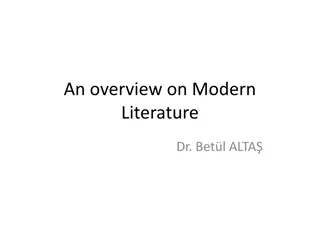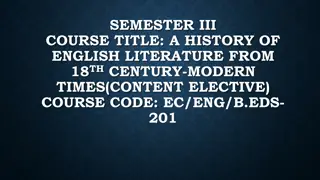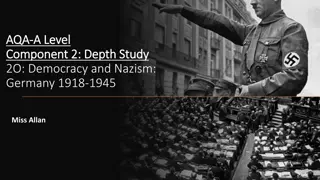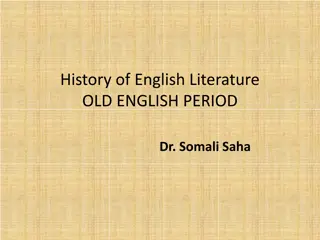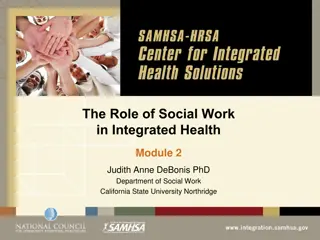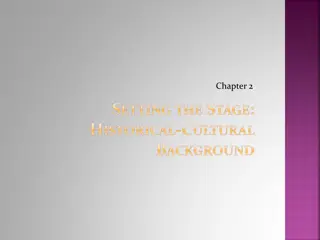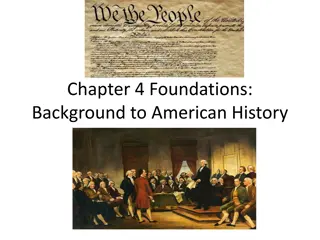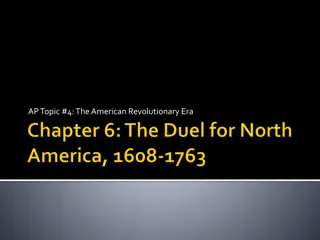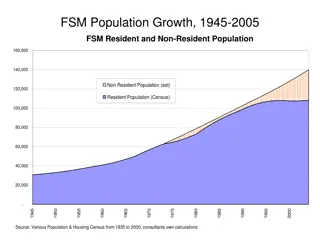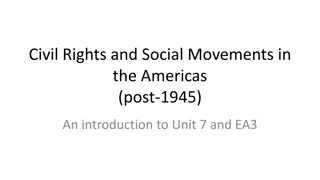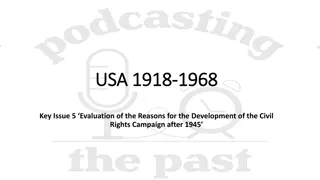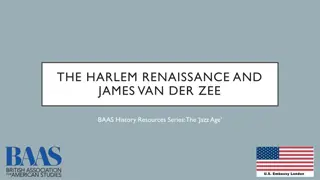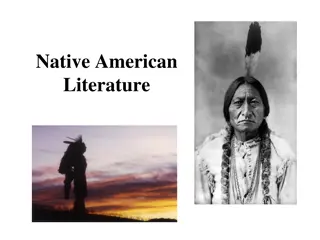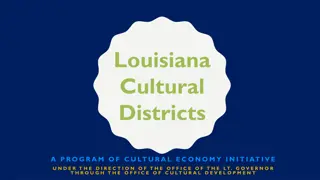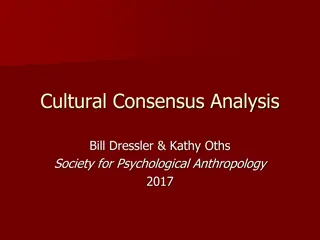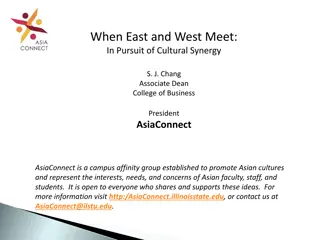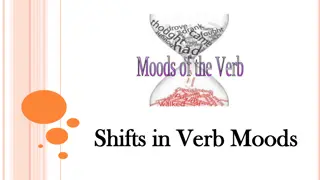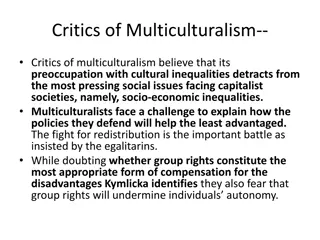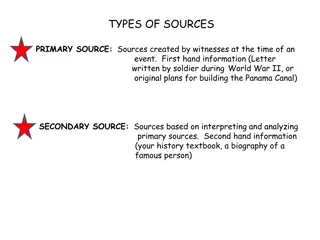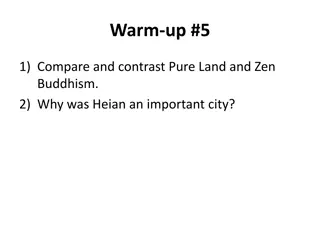The Modern Period in American Literature: 1915-1945 - Cultural Shifts and Historical Events
America's cultural coming of age during the Modern Period (1915-1945) saw significant artistic innovations in response to historical and economic events. The era was marked by World War I, social tensions, the women's suffrage movement, Prohibition, the rise of the Ku Klux Klan, and the Great Depression.
Download Presentation

Please find below an Image/Link to download the presentation.
The content on the website is provided AS IS for your information and personal use only. It may not be sold, licensed, or shared on other websites without obtaining consent from the author. Download presentation by click this link. If you encounter any issues during the download, it is possible that the publisher has removed the file from their server.
E N D
Presentation Transcript
The Modern Period in American Literature 1915-1945 Dr. Karen Rose
Many historians argue that Americas cultural coming of age occurs during this time. The artistic innovations of Modernism are viewed as a response to dramatic historical, cultural, and economic events.
Significant Events of the Modern Period 1914 World War I begins. President Wilson declares America s neutrality. 1917 The U.S. enters World War I to make the world safe for democracy. 1918 World War I ends 8.7 million people died for reasons many people could not understand
Before World War I, people believed that technology was a sign of progress and that it would help to serve humanity. The horrors of technology applied to warfare, however, highlighted the ambiguities of progress. Machine guns, tanks, submarines, airplanes, flame throwers, and poison gas proved that technology could be used for mass violence.
1919 Riots motivated by racial tensions erupt in American cities during the Red-Summer of 1919. The worst riots occurred in Chicago after a black teenager was stoned to death for swimming in a whites only Lake Michigan beach. Blacks retaliated, and whites reacted. After over a week of violence, 38 people were killed, 537 were injured, and over 1,000 were left homeless.
1920 - Prohibition begins after the Eighteenth Amendment forbids the manufacture, sale, or transportation of intoxicating liquors. 1933 The Eighteenth Amendment is repealed.
1929 The U.S. Stock Market crashes 1930s The Great Depression
1939 France and England declare war on Germany when Hitler invades Poland. World War II begins. 1941 - Japan attacks Pearl harbor, and America enters WWII. 1942 - President Roosevelt initiates the Manhattan Project, a research and development project to build the atomic bomb. 1945 - Allied troops liberate German concentration camps, American bombers drop napalm in Tokyo, the U.S. drops atomic bombs on Hiroshima and Nagasaki, Japan surrenders, World War II ends.
The events that took place during these tumultuous times had a deep and wide-ranging impact on aesthetic sensibility. Artists felt that traditional art forms could no longer express the modern psychological state of dislocation, alienation, anxiety.
Literary Modernisms most significant feature is: Experimentation Style Subject Matter The phrase make it new, attributed to Ezra Pound, became a rallying cry for writers who participated in this cultural movement
The Style of Literary Modernism. Modernism s literary forms are innovative and, often, challenging. Writers were willing to disrupt traditional notions of order, sequence, and unity. They risked a certain amount of incoherence for the sake of experimentation. Instead of predictable rhymes and forms, Modern poetry is sometimes chaotic, as if to mirror the randomness of modern life and to challenge the reader s notion of order. While doing the reading for week 4, Ezra Pound, William Carlos Williams, T.S. Eliot, and Gertrude Stein will give you a sense of Modern poetry s experimentation with style
The Style of Literary Modernism Stream of consciousness is a style that some Modern writers use to portray the inner workings of a character s mind. Writers catalog or describe the character s thoughts, impressions, emotions, and ideas in rapid succession and without any interpretation or explanation by an outside narrator. Writers who employ this style believe that it more accurately represents the confused and sometimes random jumps of the human mind.
The Subject Matter of Literary Modernism Alienation Existentialism Primitivism The Harlem Renaissance
Alienation During the Modern period, many young Americans felt like outsiders within their own culture. It was difficult for them to come to terms with the unnecessary suffering and enormous loss of life caused by war. Many artists were also troubled by the racism and sexism that was prevalent in American culture. This helps explain why many Modernists experimented with their own styles, rather than tap into the traditional literary forms of their culture. The pervasive sense of alienation that many writers felt led them to leave the U.S. and live in voluntary exile in England and Europe. Often referred to as expatriates, writers as diverse as Gertrude Stein, Ernest Hemingway, T.S. Eliot, Ezra Pound, Robert Frost, Langston Hughes, and Sherwood Anderson spent years living abroad. In fact, some of them never returned home to the U.S.
Alienation You are all a lost generation. -Gertrude Stein (quoted by Ernest Hemingway as an epigraph to his 1926 novel, The Sun Also Rises)
Existentialism Many modernists rejected traditional philosophical and religious systems of belief in favor of Existentialism, which suggests a meaningless, chaotic, Godless world. Existentialists believe that the individual has the sole responsibility for giving his/her own life meaning and living life passionately and sincerely, in spite of many obstacles and distractions including despair, angst, absurdity, boredom, and death.
Primitivism Modernists were inspired by Native American and African American art. The obsession with so-called primitive material and attitudes was fueled by an exploding interest in Freudian and Jungian psychology. Both Freud and Jung discussed hidden, subconscious motives, and the primitive appeared to offer a setting to explore their theories of psychology and sexuality. The primitive was appealing because it seemed to represent a world unaffected by the constraints of modernity.
Harlem Renaissance During the 1920s, Harlem an area in upper Manhattan, New York -- became the national center of African American culture: theater, music, dance, and literature. The Harlem Renaissance refers to the period just after WWI to the Depression when African American writers produced a tremendous amount of literary work. Writers of the Harlem Renaissance express disillusionment with America and its promises. Their disappointment was fueled by the continued racial strife and outbursts of prejudice and violence.
In conclusion, Modernism was a massive movement that included a broad range of authors, styles, and themes. It was a revolt against the conservative values of Realism. Modernism underscored the abstract, unconventional, largely uncertain ethic brought on by rapidly changing technology and dramatic cultural shifts. Due to the richness of the art and literature produced during this time, it is sometimes referred to as the 20th Century Renaissance.
